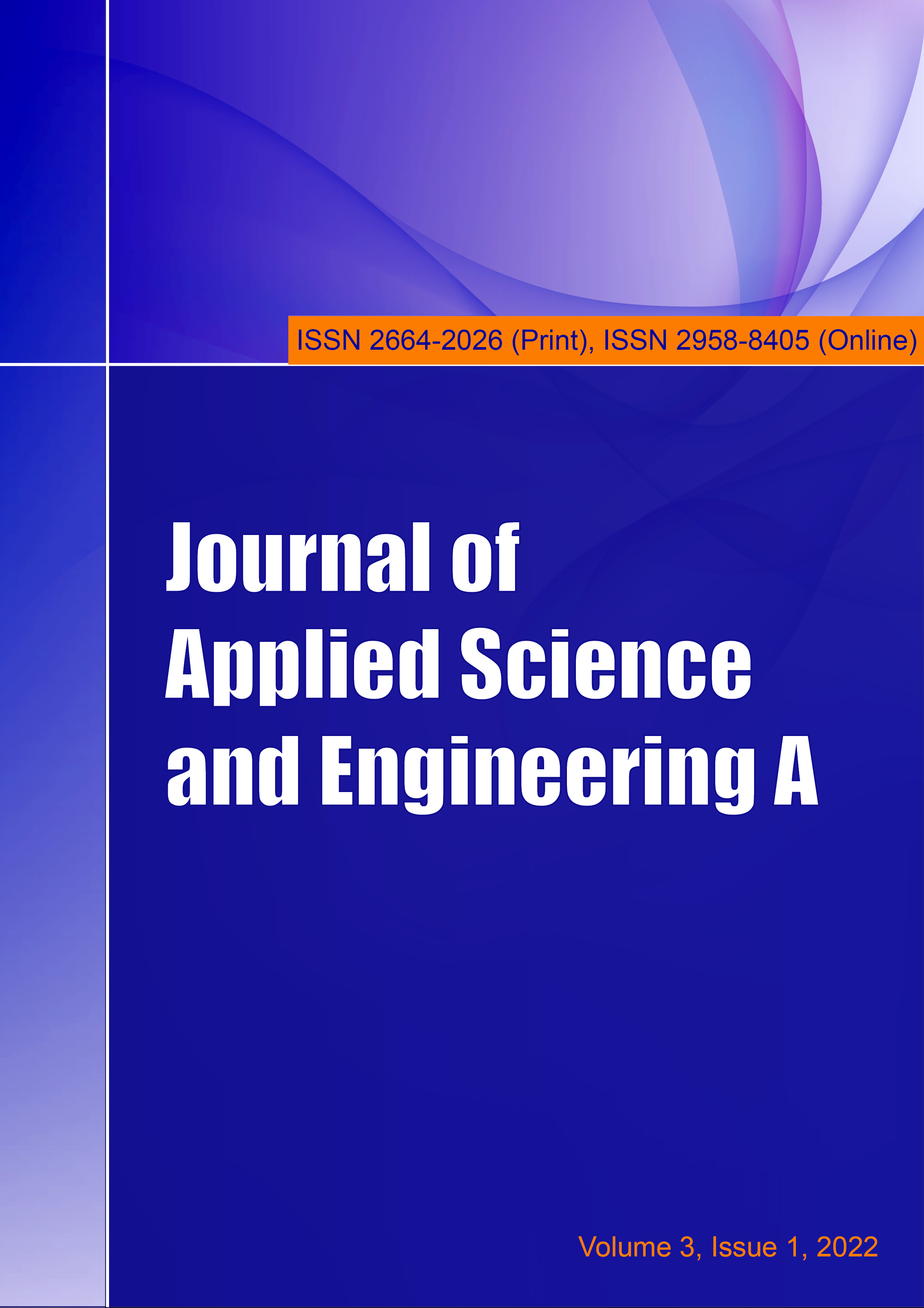Motion and structure from the linear and non-linear algorithms
DOI:
https://doi.org/10.5564/jasea.v3i1.2454Keywords:
Perspective geometry, image noise, noisy correspondencesAbstract
This study presents the estimations of the 3D motion of a moving object in an image sequence taken from a monocular camera through linear and non-linear equations and determines the differences between linear and non[1]linear algorithms in terms of theoretical level and estimation accuracy with noisy point correspondences. Firstly, we investigated linear and non-linear algorithms for determining 3D motion at the theoretical level. Second, we estimated the 3D motion of the moving object in an image frame at two different instants of time with feature point correspondences in real-time. Finally, we implemented an accuracy analysis of the results from the linear and non-linear estimations. We showed that the non-linear approach produced more accurate results than the linear approach from noisy point correspondences.
Downloads
322
References
Weng Juyang, N. Ahuja and T. S. Huang, Motion and structure from point correspondences: a robust algorithm for planar case with error estimation, 9th International Conference on Pattern Recognition, 1 (1988), pp. 247-251, https://doi.org/10.1109/ICPR.1988.28215
J. Weng, N. Ahuja and T. S. Huang, Motion and structure from point correspondences with error estimation: planar surfaces, in IEEE Transactions on Signal Processing, 39-12, (1991) pp. 2691-2717, https://doi.org/10.1109/78.107418
Sunglok Choi, Jong-Hwan Kim, Fast and reliable minimal relative pose estimation under planar motion, Image and Vision Computing, 69 (2018), pp. 103-112, https://doi.org/10.1016/j.imavis.2017.08.007
Yingming Hao, Feng Zhu, Jinjun Ou, Qingxiao Wu, J. Zhou and Shuangfei Fu, Robust analysis of P3P pose estimation, IEEE International Conference on Robotics and Biomimetics (ROBIO), Sanya, (2007), pp. 222-226, https://doi.org/10.1109/ROBIO.2007.4522164
A. Ansar and K. Daniilidis, Linear pose estimation from points or lines, in IEEE Transactions on Pattern Analysis and Machine Intelligence, 25-5, (2003), pp. 578-589, https://doi.org/10.1109/TPAMI.2003.1195992
Shiqiang Hu, Minzhe Li, Single view based nonlinear vision pose estimation from coplanar points, Optik, 2020.
Maoteng Zheng, Shiguang Wang, Xiaodong Xiong, Junfeng Zhu, A fast and accurate iterative method for the camera pose estimation problem, Image and Vision Computing, 94, (2020), https://doi.org/10.1016/j.imavis.2019.103860
A.W. Fitzgibbon, Robust registration of 2D and 3D point sets, Image and Vision Computing, 21 (2003), pp.1145–1153, https://doi.org/10.1016/j.imavis.2003.09.004
D. Nister, An efficient solution to the five-point relative pose problem, IEEE Transactions on Pattern Analysis and Machine Intelligence, 26-6 (2004), pp. 756–770, https://doi.org/10.1109/TPAMI.2004.17
D. Oberkampf, D.F. Dementhon, and L.S. Davis, Iterative pose estimation using coplanar feature points, Computer Vision and Image Understanding, 63-3 (1996), pp. 495–511, https://doi.org/10.1006/cviu.1996.0037
Po-Chen Wu, Hung-Yu Tseng, Ming-Hsuan Yang, Shao-Yi Chien, Direct pose estimation for planar objects, Computer Vision and Image Understanding, 172 (2018), pp. 50-66, https://doi.org/10.1016/j.cviu.2018.03.006
Ping Wang, Guili Xu, Zhengsheng Wang, Yuehua Cheng, An efficient solution to the perspective-three-point pose problem, Computer Vision and Image Understanding, 166 (2018), pp.81-87, https://doi.org/10.1016/j.cviu.2017.10.005
B.M. Haralick, CN. Lee, K. Ottenberg, et al., Review and analysis of solutions of the three-point perspective pose estimation problem, International Journal of Computer Vision, 13 (1994), pp. 331-356, https://doi.org/10.1007/BF02028352
Xiao-Shan Gao, Xiao-Rong Hou, Jianliang Tang and Hang-Fei Cheng, Complete solution classification for the perspective-three-point problem, in IEEE Transactions on Pattern Analysis and Machine Intelligence, 25-8, (2003), pp. 930-943, https://doi.org/10.1109/TPAMI.2003.1217599
L. Kneip, D. Scaramuzza, and R. Siegwart, A novel parametrization of the perspective-three-point problem for a direct computation of absolute camera position and orientation, In IEEE Conference on Computer Vision and Pattern Recognition, CVPR 2011, pp. 2969–2976, https://doi.org/10.1109/CVPR.2011.5995464
V. Lepetit, F. Moreno-Noguer, and P. Fua, EPnP: An accurate O(n) solution to the PnP problem, International Journal of Computer Vision, 81-2 (2009), pp. 155– 166, https://doi.org/10.1007/s11263-008-0152-6
B. Horn, Closed-form solution of absolute orientation using unit quaternions, Journal of the Optical Society of America, JOSA A, 4-4 (1987), pp. 629– 642, https://doi.org/10.1364/JOSAA.4.000629
M.A. Ameller, B. Triggs, and L. Quan, Camera pose revisited-new linear algorithms, In European Conference on Computer Vision, 2000.
R. Hartley and A. Zisserman, Multiple View Geometry in Computer Vision, Cambridge University Press, 2001.
J. Weng, T. S. Huang and N. Ahuja, Motion and structure from two perspective views: algorithms, error analysis, and error estimation, in IEEE Transactions on Pattern Analysis and Machine Intelligence, 11-5 (1989), pp. 451-476, https://doi.org/10.1109/34.24779
C.P. Lu, G.D. Hager, and E. Mjolsness, Fast and globally convergent pose estimation from video images, IEEE Trans. on Pattern Analysis and Machine Intelligence, 22 (2000), pp. 610–622, https://doi.org/10.1109/34.862199
C. J. Poelman and T. Kanade, A para-perspective factorization method for shape and motion recovery, in IEEE Transactions on Pattern Analysis and Machine Intelligence, 19-3 (1997), pp. 206-218, https://doi.org/10.1109/34.584098
T. Tumurbaatar and T. Kim, Development of real-time object motion estimation from single camera, Spat. Inf. Res., 25(2017), pp. 647-656, https://doi.org/10.1007/s41324-017-0130-6.
T. S. Huang and A. N. Netravali, Motion and structure from feature correspondences: A review, in Proceedings of the IEEE, 82-2 (1994), pp. 252-268, https://doi.org/10.1109/5.265351
Tumurbaatar Tserennadmid, Kim Taejung, Comparative Study of Relative-Pose Estimations from a Monocular Image Sequence in Computer Vision and Photogrammetry. Sensors, 19-8, (2019), pp.1905, https://doi.org/10.3390/s19081905
Downloads
Published
How to Cite
Issue
Section
License
Copyright (c) 2022 Tserennadmid Tumurbaatar

This work is licensed under a Creative Commons Attribution 4.0 International License.
Copyright on any research article in the Journal of Applied Science and Engineering A is retained by the author(s).
The authors grant the Journal of Applied Science and Engineering A a license to publish the article and identify itself as the original publisher.

Articles in the Journal of Applied Science and Engineering A are Open Access articles published under a Creative Commons Attribution 4.0 International License CC BY.
This license permits use, distribution and reproduction in any medium, provided the original work is properly cited.




